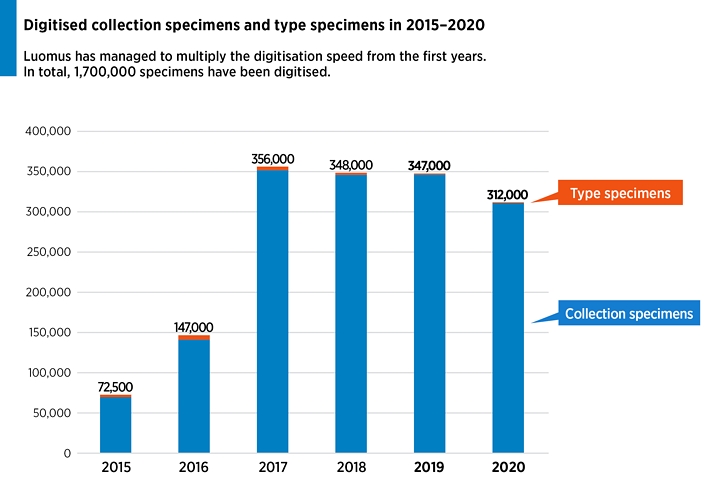ADVANCEMENTS IN DIGITALISATION
When the images and collection data of digitised collection specimens are transferred online, researchers from all around the world can easily access the Luomus collections. In addition to enabling easy access to information, digitalisation also makes it easier to manage and analyse the constantly growing stores of data.
Digitalisation has been a significant part of the work of Luomus in recent years. Luomus has become a leading developer of digitalisation among European natural science collections. Digitalisation entails not just the digitisation of the collections, but also the development of data systems as well as learning to use new digital work methods.
The digitisation speed at Luomus has remained high. Annually, around 350 000 specimens are digitised (Table 9). The intention is to triple the digitisation pace during the coming four years to reach the goal of providing all collections in a digital format online by 2035. In 2020 the corona virus pandemic restricted the digitisation for some time. In addition, the digital mass processing line for plants faced technical problems the same year. Despite these problems, Luomus managed to reach a record in the number of individually digitised specimens. In 2019, 130 000 specimens were digitised and the next year 160 000.
